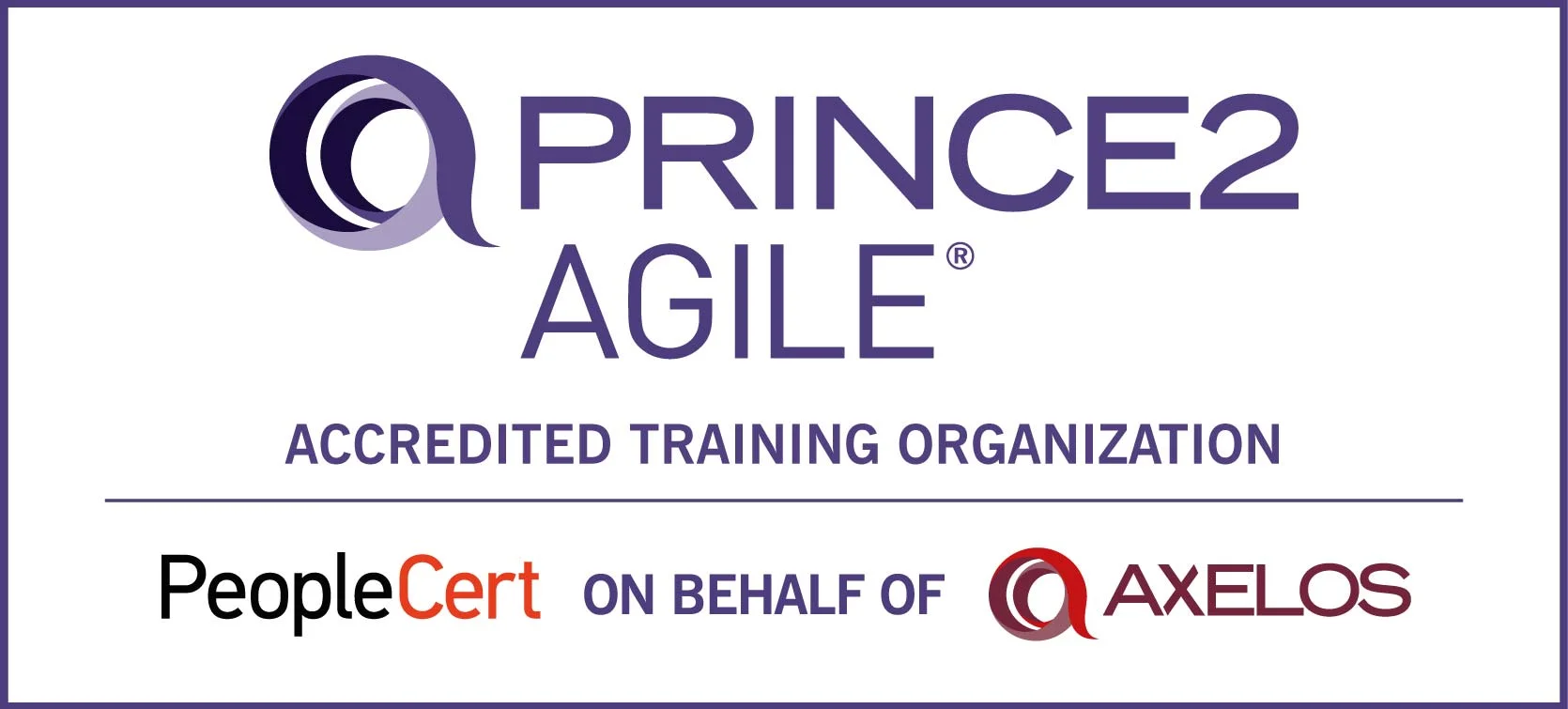What is AWS Cloud Services?
AWS for beginners is an essential starting point for anyone looking to explore the world of cloud computing. Amazon Web Services (AWS) provides a wide range of scalable and reliable cloud solutions, making it a popular choice for businesses and developers. If you are just starting, understanding the basics of AWS for beginners is crucial to leverage its tools effectively. From setting up an account to exploring key services like EC2 and S3, there are many resources available, including an AWS tutorial for beginners, to help you get started. These tutorials simplify complex topics, ensuring a smooth learning experience.
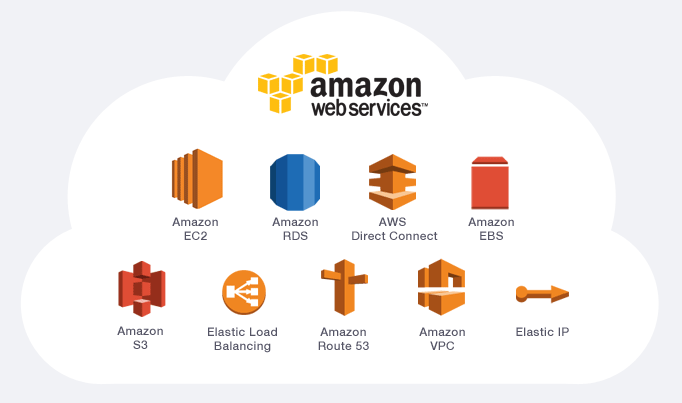
AWS Cloud Services refer to the extensive suite of cloud computing offerings provided by Amazon Web Services (AWS), which allow businesses and individuals to access and utilize computing resources over the internet. These services are designed to provide flexibility, scalability, and reliability without the need for on-premises hardware and infrastructure.
Benefits of using AWS Web Services
Learning AWS for beginners opens doors to countless opportunities in the tech industry. The platform's user-friendly interface and comprehensive documentation make it accessible even to those without prior experience. Additionally, an AWS tutorial for beginners can guide you through practical implementations, helping you gain hands-on expertise. With AWS for beginners, you can build and deploy applications, manage data storage, and even explore advanced features like machine learning at your own pace. It’s the perfect way to kickstart your cloud computing journey.
- Scalability: AWS allows businesses to easily scale resources up or down based on demand, ensuring that they can handle varying workloads without over-provisioning.
- Cost Efficiency: With a pay-as-you-go pricing model, users only pay for the resources they use, which helps reduce costs compared to traditional on-premises infrastructure.
- Global Reach: AWS has a vast network of data centers across multiple regions, enabling users to deploy applications close to their customers for improved performance and reduced latency.
- Security: AWS offers robust security features, including encryption, identity and access management, and compliance with various industry standards, ensuring that data and applications are protected.
- Flexibility and Variety: AWS provides a wide range of services, including computing, storage, databases, machine learning, and analytics, allowing businesses to choose the best tools for their specific needs.
- High Availability and Reliability: AWS’s global infrastructure is designed for high availability, with multiple Availability Zones in each region, enabling redundancy and fault tolerance.
- Managed Services: Many AWS services are fully managed, allowing users to focus on application development rather than infrastructure management. Services like Amazon RDS and AWS Lambda reduce the operational burden.
- Innovation and Agility: AWS continuously introduces new services and features, enabling businesses to adopt the latest technologies quickly and innovate faster.
- Integration with Other Services: AWS services are designed to work seamlessly together, allowing businesses to build complex applications with ease and leverage existing AWS tools.
- Extensive Support and Documentation: AWS offers comprehensive documentation, tutorials, and a community forum, along with support plans to help users troubleshoot and optimize their usage.
- Disaster Recovery: AWS provides tools and services for effective disaster recovery planning, ensuring business continuity through backup and restore solutions.
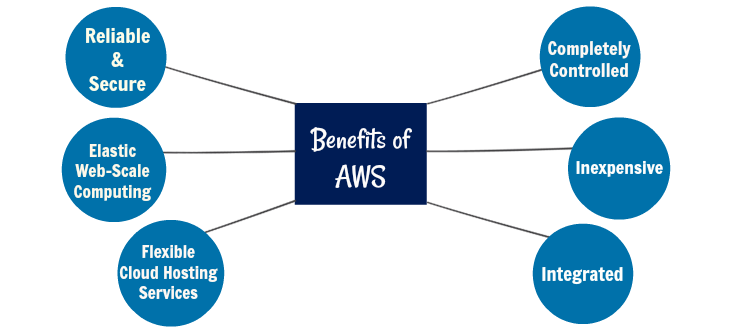
Getting Started: AWS for Beginners
- Create an AWS Account:
- Visit the AWS website and click on "Create a Free Account."
- Follow the prompts to enter your email, create a password, and provide payment information. You’ll need this for identity verification, even if you plan to use the Free Tier.
- Sign In to the AWS Management Console:
- Go to the AWS Management Console.
- Sign in using your account credentials (email for root users or account ID for IAM users).
- Explore the AWS Management Console:
- Familiarize yourself with the dashboard, where you can access various AWS services.
- Use the search bar to find specific services quickly.
- Set Up IAM Users (Recommended):
- For security, set up Identity and Access Management (IAM) users instead of using your root account for daily tasks.
- Create users and assign them appropriate permissions.
- Choose Your First AWS Service:
- Decide which service to explore first based on your needs. Common starting points include:
- Amazon EC2: For launching virtual servers.
- Amazon S3: For storing and retrieving data.
- AWS Lambda: For serverless computing.
- Decide which service to explore first based on your needs. Common starting points include:
- Follow Tutorials and Documentation:
- AWS provides extensive documentation and tutorials for each service. Take advantage of these resources to learn how to set up and manage your chosen services.
- Launch Your First Service:
- For example, if you choose Amazon EC2, you can launch a virtual server by selecting an AMI, configuring instance details, and setting up security groups.
- Monitor Your Usage and Costs:
- Use the AWS Billing Dashboard to track your usage and understand costs. Set up budgets and alerts to avoid unexpected charges.
- Experiment and Build:
- Start building your applications and experimenting with different AWS services. Take advantage of the Free Tier to explore without incurring costs.
- Join the AWS Community:
- Engage with the AWS community through forums, user groups, and events to learn from others and share your experiences.
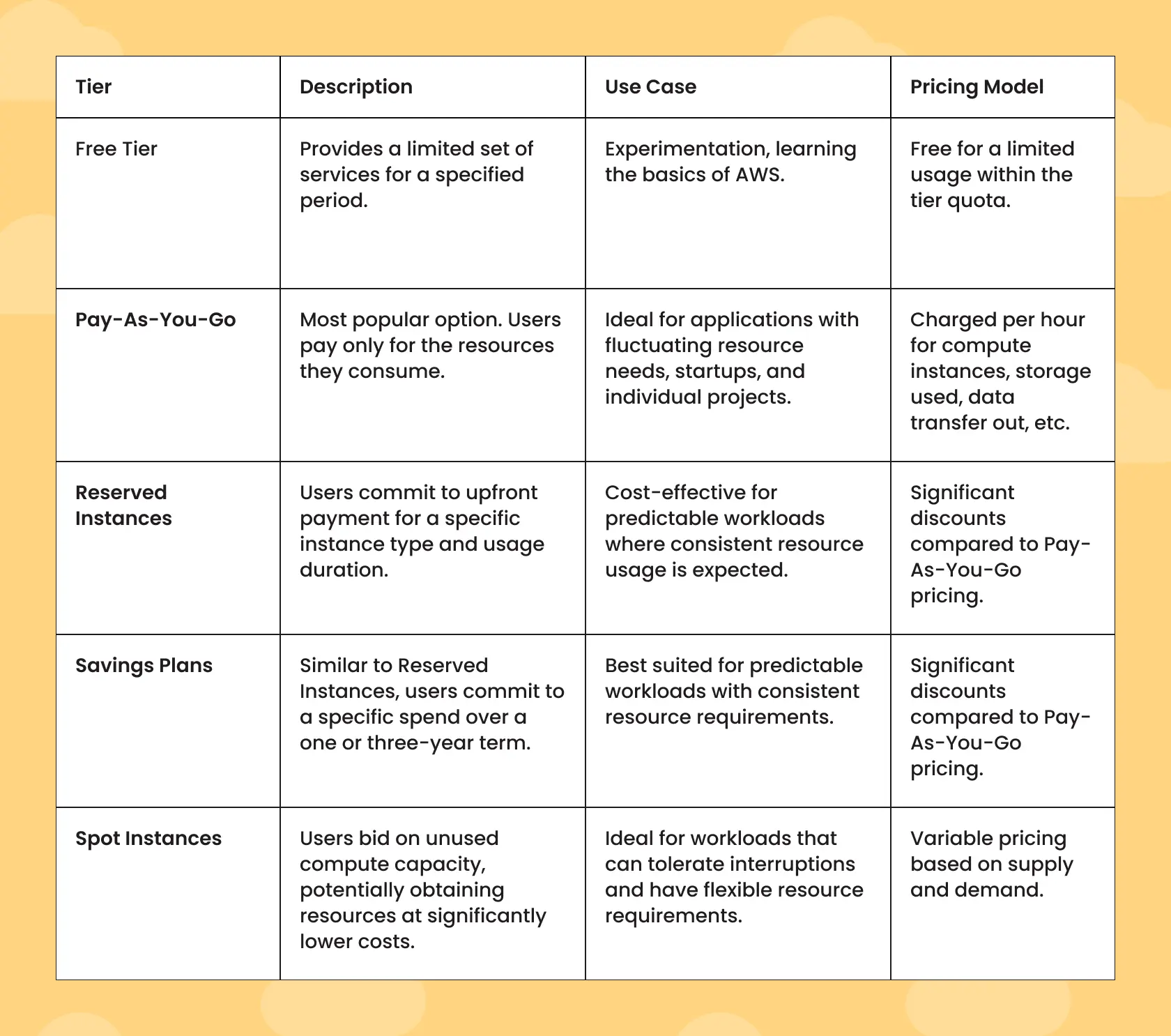
Mastering AWS for beginners is the first step towards building a successful career in cloud computing.
Use Cases and Real-world Applications
Storage and Backup
AWS is majorly used as a storage and backup solution for a large database, providing you with different kinds of storage services to serve the varying needs of businesses. It offers services to store structured, unstructured, semi-structured, backup and archival data, and big data.
AWS provides scalable and durable storage solutions for businesses to store and back up their data. Amazon S3 offers object storage for storing any type of data, while Amazon EBS (Elastic Block Store) provides block-level storage volumes for use with EC2 instances. Amazon Glacier is suitable for long-term archival and backup needs.
Web Hosting and Content Delivery
Many businesses use AWS to host their websites and web applications using services like Amazon EC2 (Elastic Compute Cloud) for virtual servers and Amazon S3 (Simple Storage Service) for storing static content.
Big Data Analytics
AWS offers a suite of services for processing and analyzing large volumes of data. Amazon Redshift provides data warehousing capabilities for running complex analytics queries, while Amazon EMR (Elastic MapReduce) allows businesses to process large datasets using Apache Hadoop, Spark, and other big data frameworks.
Machine Learning and Artificial Intelligence
AWS offers machine learning services that enable businesses to build, train, and deploy machine learning models without requiring expertise in data science or machine learning algorithms. Amazon SageMaker provides a fully managed platform for building, training, and deploying machine learning models at scale.
IoT (Internet of Things)
AWS IoT services enable businesses to connect and manage IoT devices securely at scale. With services like AWS IoT Core, businesses can collect and analyze data from IoT devices to derive insights and automate actions.
DevOps and Continuous Integration/Continuous Deployment (CI/CD)
AWS provides a suite of tools and services for implementing DevOps practices and automating software development processes. Services like AWS CodePipeline, AWS CodeBuild, and AWS CodeDeploy enable businesses to automate code deployment, testing, and monitoring.
E-commerce and Online Retail
Many e-commerce businesses leverage AWS to build and scale their online platforms. AWS provides services like Amazon EC2, Amazon RDS (Relational Database Service), and AWS Lambda for building and running e-commerce applications with high availability and scalability.
Media and Entertainment
AWS offers services for media processing, streaming, and content delivery, making it suitable for media and entertainment businesses. Services like Amazon Elastic Transcoder, Amazon Kinesis Video Streams, and Amazon CloudFront enable businesses to deliver high-quality media content to their audiences.
AWS for Beginners and Third-Party Integrations
AWS provides a robust ecosystem that supports integrations with various third-party applications and services. This allows organizations to enhance their cloud capabilities, streamline workflows, and improve overall efficiency. Here are key aspects and examples of AWS third-party integrations:
Marketplace Integrations:
- AWS Marketplace: A digital catalog that offers software solutions from independent vendors. Organizations can find, buy, and deploy third-party applications that integrate seamlessly with AWS services.
DevOps Tools:
- CI/CD Integration: Tools like Jenkins, GitHub Actions, and CircleCI can be integrated with AWS services (such as AWS CodePipeline and AWS Lambda) to automate software development processes.
- Monitoring and Logging: Third-party tools like Datadog, New Relic, and Splunk can be integrated with AWS to monitor application performance and log data across services.
Data Analytics:
- Business Intelligence: Tools like Tableau and Looker can connect to AWS data services (like Amazon Redshift and Amazon Athena) to provide visualization and reporting capabilities on data stored in AWS.
- ETL Services: Tools such as Apache NiFi and Talend can be used to move and transform data between AWS and on-premises or other cloud data sources.
Security and Compliance:
- Identity and Access Management: Third-party identity providers like Okta and OneLogin can be integrated with AWS IAM for single sign-on (SSO) and user management.
- Security Monitoring: Tools such as CloudCheckr and Sumo Logic provide security and compliance monitoring for AWS environments, helping organizations manage risks and ensure compliance.
Content Management and Delivery:
- CMS Integration: Content management systems like WordPress and Drupal can be deployed on AWS, with plugins and extensions available for easy integration with AWS services like Amazon S3 for storage and CloudFront for content delivery.
- Streaming Services: Third-party video streaming services can integrate with AWS Elemental Media Services to enhance video processing and delivery capabilities.
Communication and Collaboration:
- Integration with Communication Tools: Services like Slack and Microsoft Teams can be integrated with AWS applications to facilitate real-time communication and collaboration among teams.
IoT Solutions:
- Third-Party IoT Platforms: Platforms like ThingSpeak and Particle can integrate with AWS IoT Core to manage and analyze data from IoT devices effectively.
CRM and ERP Systems:
- Integration with CRM/ERP: Systems like Salesforce and SAP can be integrated with AWS to synchronize data, automate workflows, and enhance customer relationship management.
AWS Global Infrastructure
AWS Global Infrastructure refers to the physical and network framework that supports Amazon Web Services' cloud services across the world. This infrastructure is designed to provide reliable, scalable, and secure cloud services to customers globally, with high performance and low latency.
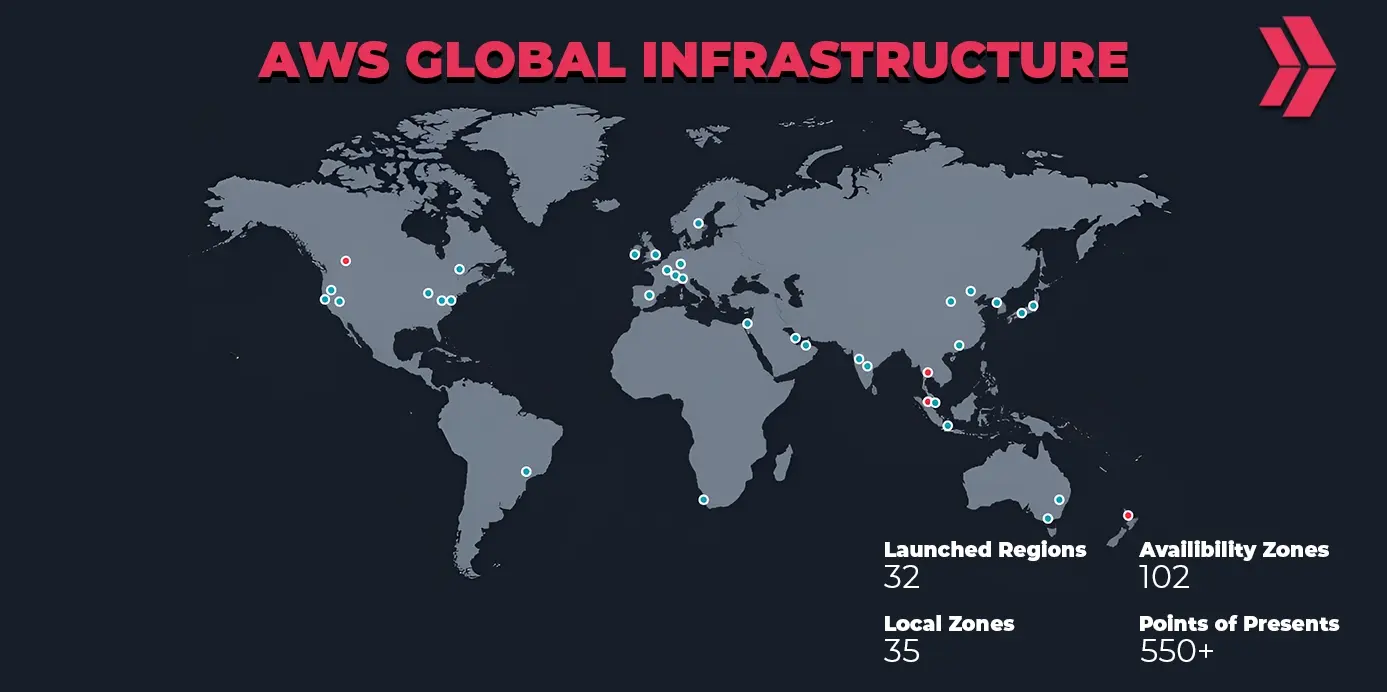
Author Details

Vaibhav Umarvaishya
Cloud Engineer | Solution Architect
As a Cloud Engineer and AWS Solutions Architect Associate at NovelVista, I specialized in designing and deploying scalable and fault-tolerant systems on AWS. My responsibilities included selecting suitable AWS services based on specific requirements, managing AWS costs, and implementing best practices for security. I also played a pivotal role in migrating complex applications to AWS and advising on architectural decisions to optimize cloud deployments.
Confused About Certification?
Get Free Consultation Call

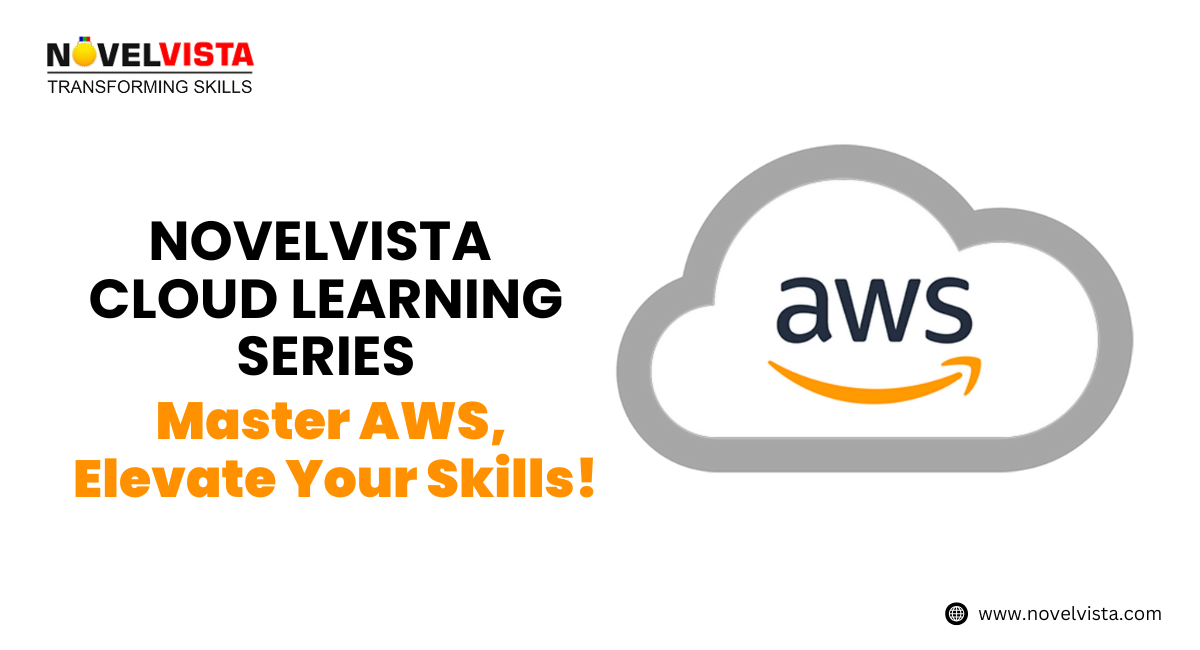
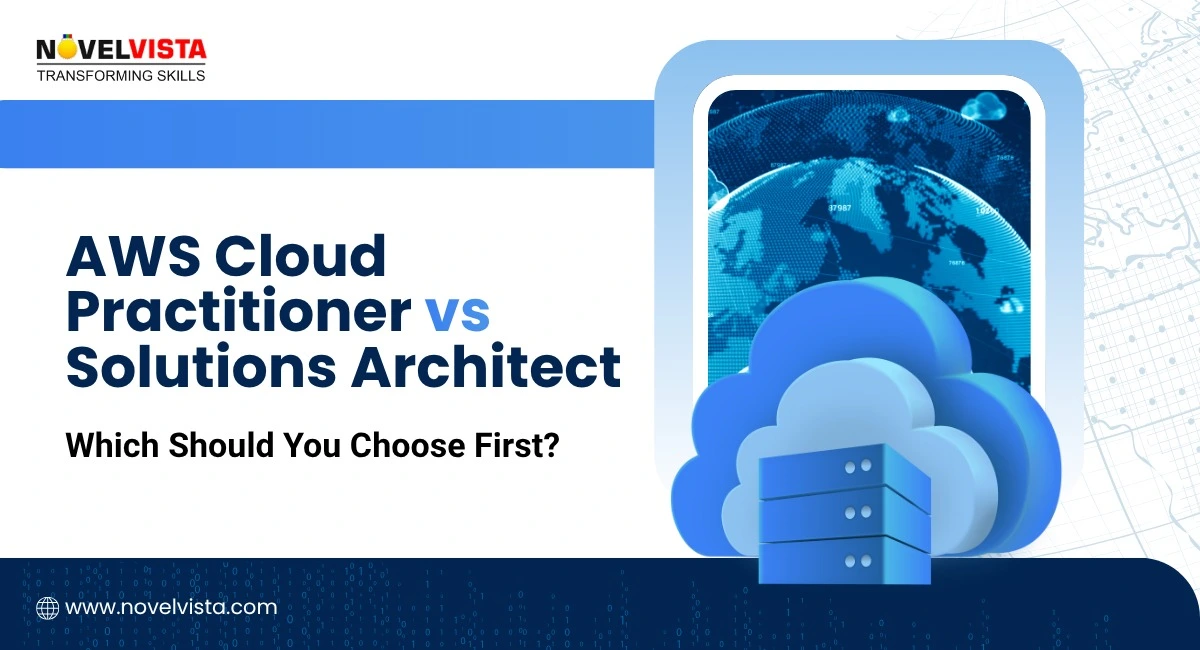
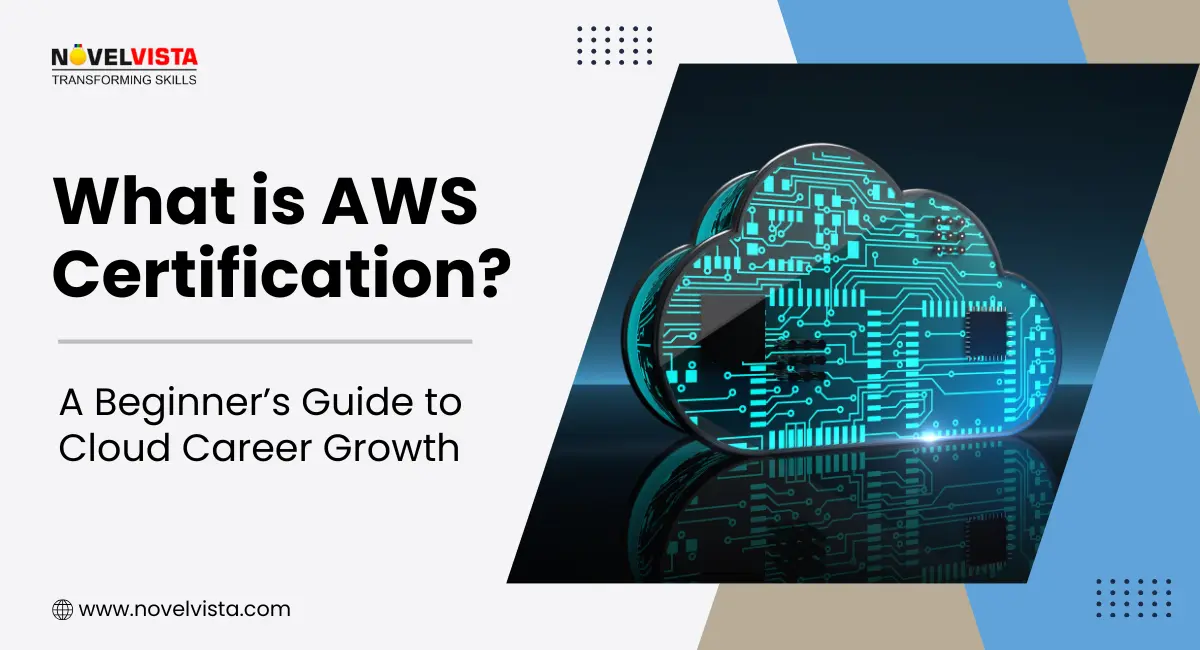
![Free AWS Solutions Architect Associate Practice Exam: No Signup, Instant Results! [Hands-on Prep] | Novelvista](https://www.novelvista.com/resources/images/blogs/other/aws-solutions-architect-mock-exam-featured.webp)

